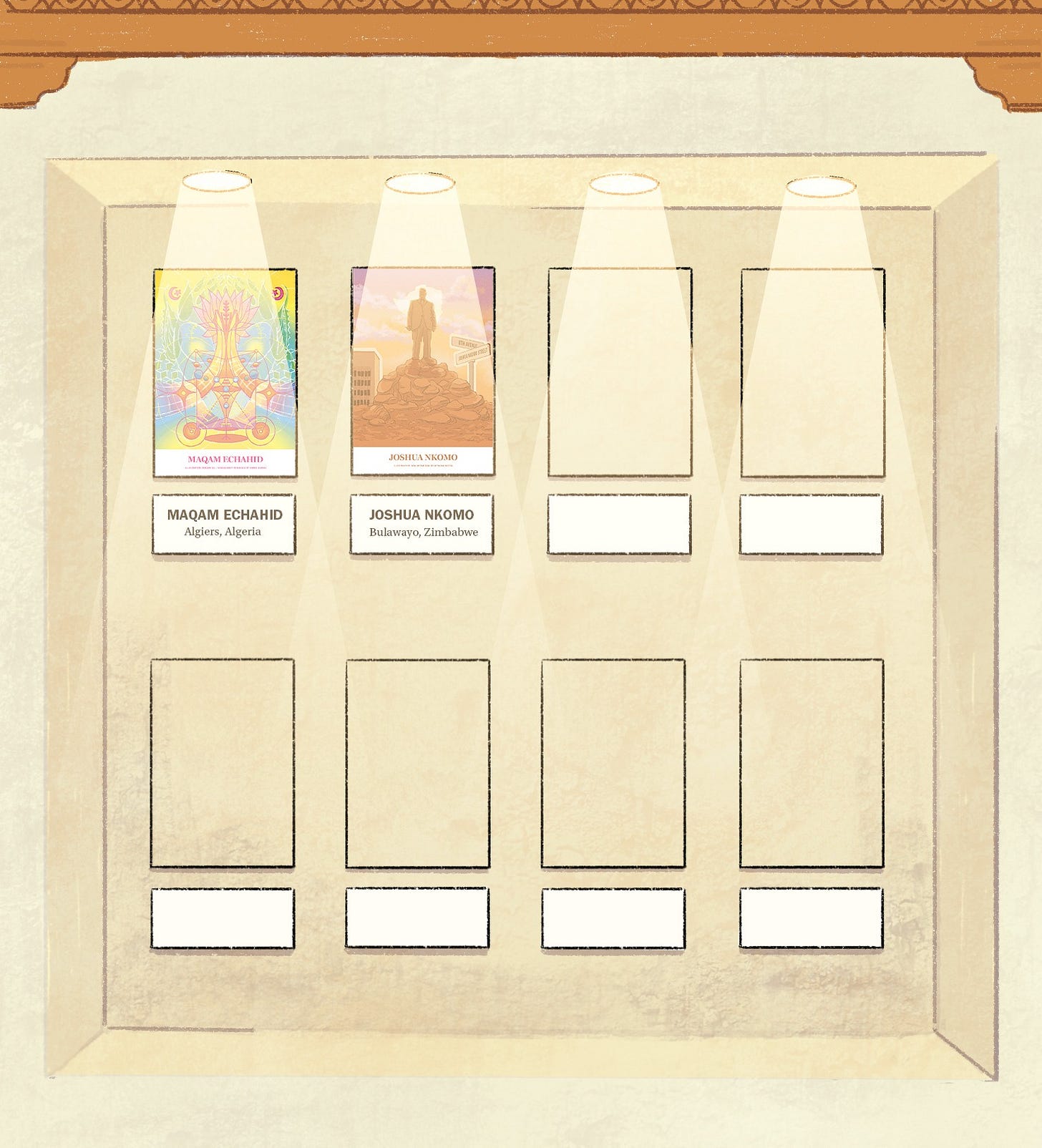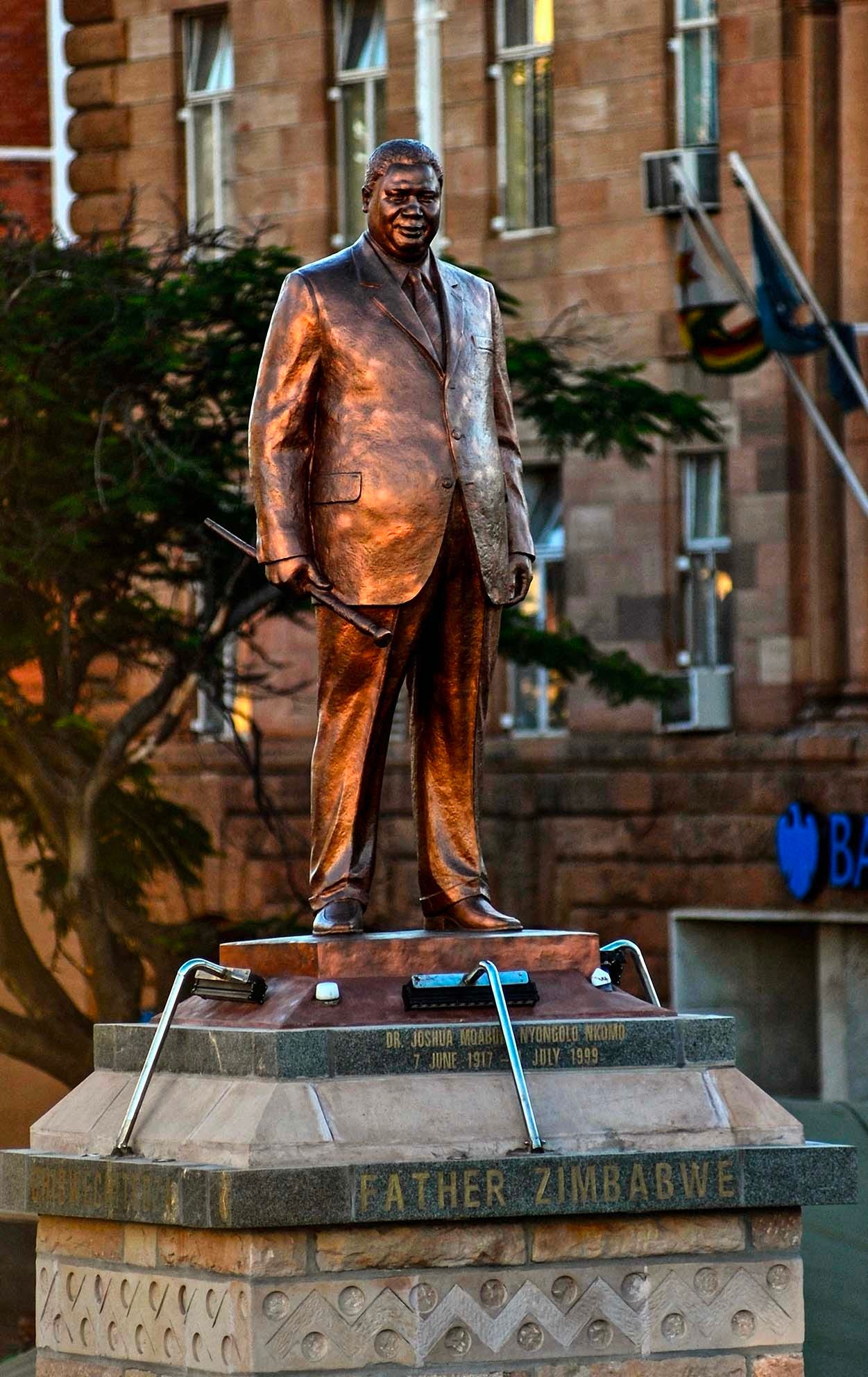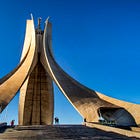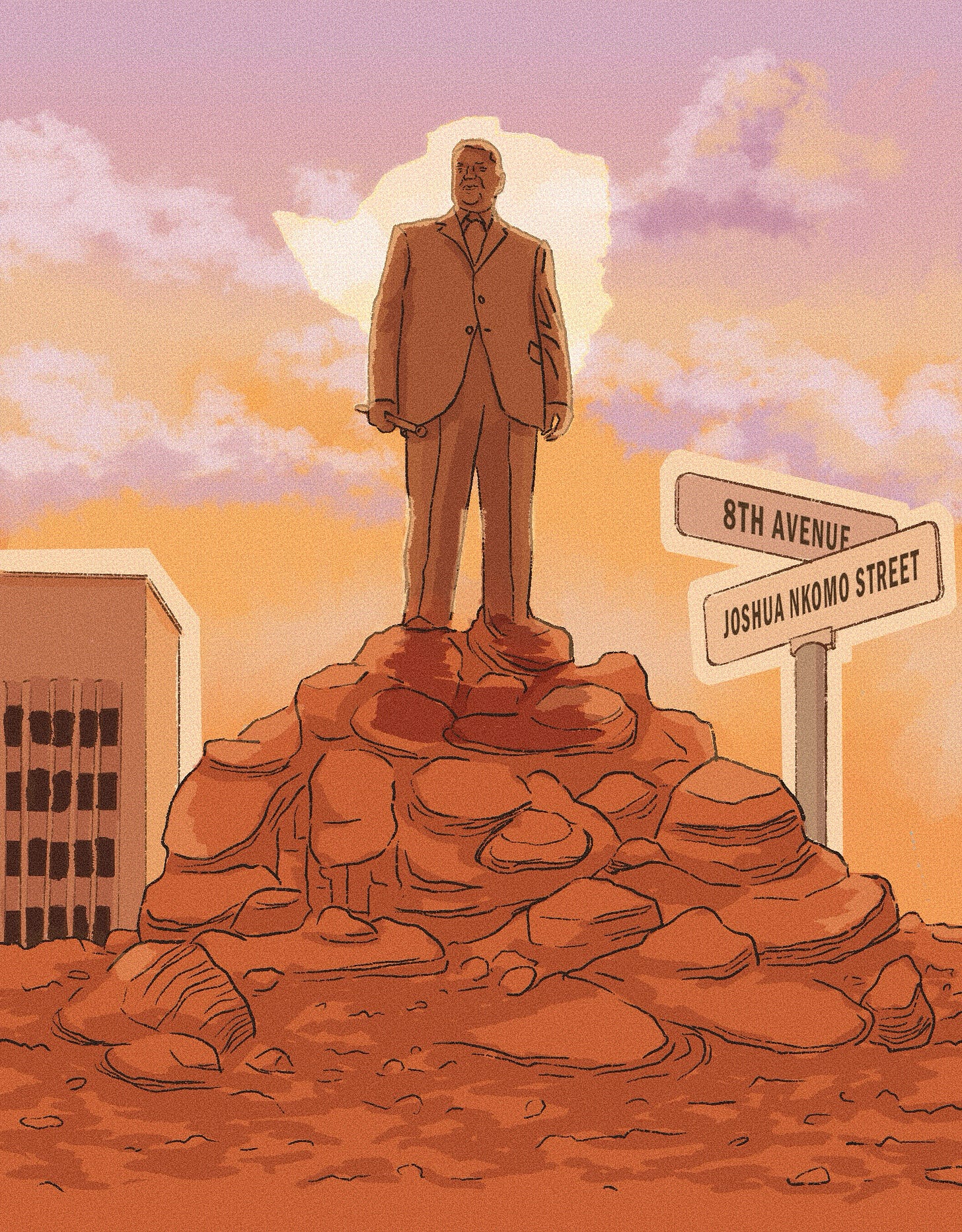Curated by Shola Lawal. Art direction by Wynona Mutisi
The Museum of Memory is a limited series by The Continent that tells the stories of some of Africa's most iconic monuments.
Created in 1982 by North Korea’s high-end Mansudae Art Studio, a towering statue of former Zimbabwe vice-president Joshua Nkomo stands at the intersection of 8th Avenue and Joshua Nkomo street in Bulawayo, Zimbabwe’s second city.
Sculpted in bronze, the face of the onetime rebel has the hint of a smile and his right hand forever grips a short walking stick. Combined with its concrete pedestal, the monument measures around 6m in height.
It was unveiled on 22 December 2013 by former president Robert Mugabe, with whom Nkomo had a complicated history. In Zimbabwe, 22 December is commemorated as Unity Day, marking the 1987 merger of Nkomo’s Zimbabwe Africa People’s Union (Zapu) with Mugabe’s Zimbabwe African National Union (Zanu) to end the latter’s bloody (and genocidal, some insist) campaign against the former’s base. The merged party – Zanu-PF – is still ruling. Nkomo was Mugabe’s vice-president from 1990 until his death in 1999.
The monument’s maker, Mansudae Art Studio, has thousands of artists from North Korea’s top art academies, and specialises in life-sized sculptures. It is one of the biggest art centres in the world but its production of this particular statue was controversial for a few reasons.
Firstly, a local Ndebele artist initially got the bid to deliver the monument. But if it wasn’t going to be the local artist, the people of Matabeleland would have chosen anyone but North Korean artists. In the region, home to Nkomo’s people, the Ndebele, North Korea is mostly remembered for its role in training the 5th Brigade, a notorious unit of the Zimbabwean security forces.
A number of massacres in Matabeland and neighbouring Midlands province during Mugabe’s anti-Zapu crackdown are attributed to the unit. The operation was codenamed “Gukurahundi” – the rain that washes away the chaff, in Shona. Targeting rebels and civilians alike, the 5th Brigade killed an estimated 20,000 people between 1982 and 1987.
Trouble between Mugabe and Nkomo started in the period immediately following the collapse of white minority rule. Their parties had worked jointly during the war against minority rule, despite deep ideological differences. Mugabe had more of the votes in the first elections in 1980 and so he was installed as prime minister.
However, Mugabe, who was from the majority Shona people, continued to be suspicious of Zapu. The party’s members were largely Ndebele or Kalanga people from Matabeleland and loyal to Nkomo. The two parties’ military wings failed to integrate into a single national army; and when Mugabe’s administration claimed it found a cache of weapons belonging to Zapu, it sparked speculation that Nkomo was planning a coup.
Beginning in January 1983, the 5th Brigade began a bloody crackdown in Matabeleland. People, particularly men, were rounded up, arrested, and taken to “re-education camps”. In the worst cases, they were tortured and summarily executed. Thousands of women and children were forced out of their homes as the unit burned down houses and other property.
In 1987, Nkomo, who had fled the country four years earlier, was forced to return and sign the Unity Accord with Mugabe. This formed the Zanu Political Front (Zanu-PF) and ended the bloodletting.
When it was first displayed back in 2010, the statue was 3m high and its pedestal 1.5m. (Normally, pedestals are far taller than the monuments they carry). But Nkomo’s family was having none of it: the buildings around the monument were too imposing for anyone to take it seriously, they complained. One critic called it a “statue without stature”.
Today, Nkomo’s up-sized statue in the middle of Bulawayo is hard to miss. Often, there’s a small crowd around it taking photographs, particularly at low-traffic hours, or using the wifi hotspots which the city set up in its vicinity.









Great piece!